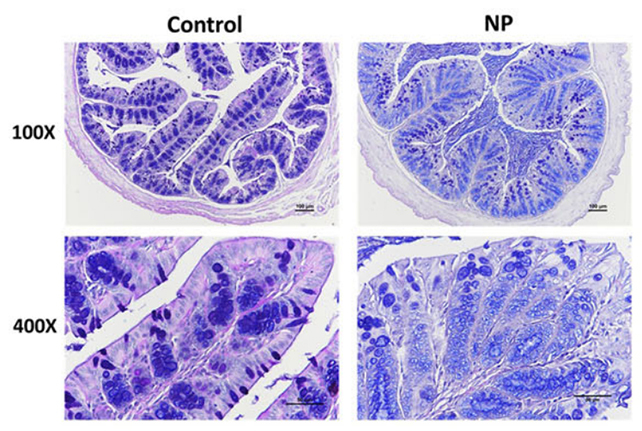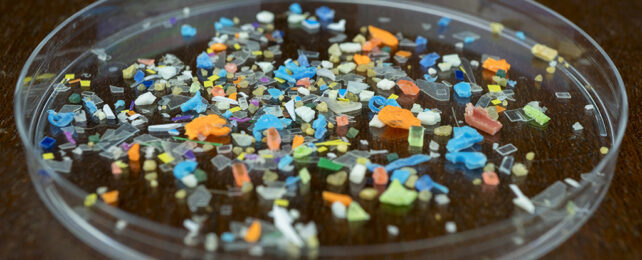We know microplastics are finding their way deep into our bodies, such is their ubiquity in the world around us, but we're still figuring out the possible health impacts. Those impacts may well include damage to gut integrity and harmful changes in gut bacteria, according to a new study.
The study was led by researchers from the National Cheng Kung University in Taiwan, who fed mice polystyrene nanoplastics for 12 weeks. Nanoplastics are the smallest type of microplastic, and in these experiments the fragments were just 100 nanometers in size, thousands of times smaller than the width of a human hair.
Careful analysis of the animals revealed subsequent changes to protein production, gene activity, bacteria levels, and the microRNA coding inside cells. For example, two proteins that normally keep the gut sealed and protected became less abundant.
The beneficial bacteria Lactobacillus decreased, the potentially harmful bacteria Ruminococcaceae increased, and a bacteria called Lachnospiraceae actually ate some of the nanoplastics.
Doing so changed the way the bacteria secreted tiny packages called extracellular vesicles, which in turn inhibited the production of intestinal mucus.
"This study is the first to show that plastic particles can interfere with the microRNA carried by extracellular vesicles between mouse intestinal cells and specific gut microbes, disrupting host–microbe communication and altering microbial composition in ways that may harm the gut health of mice," says microbiologist Wei-Hsuan Hsu, from the National Cheng Kung University.

For those of us who aren't biologists, these changes can be hard to interpret in a simple way, but overall the integrity and health of the guts of the mice took a turn for the worse. It's likely that the risk of related health complications would go up as a result.
In this study, the mechanisms behind how nanoplastics affect the gut are just as important as the effects themselves, and will now point researchers towards new approaches for understanding how microplastics might alter our bodies on a fundamental level.
"The research identifies a molecular mechanism by which plastic particles disturb gut microbiota," says Hsu.
It's important to add some context to this study. Mice are useful substitutes for humans in research, but they're obviously not an exact match, so we need to see if similar gut changes come about in people.
What's more, the mice were fed nanoplastics at a much higher level than humans would usually be exposed to. It's not clear if we are ingesting anywhere near enough plastic to trigger the changes shown in this study.
Even with those limitations in mind, though, the research raises some real concerns over microplastics and health. More data is needed on our exposure to these tiny plastic fragments, and the subsequent effects.
"Given the current limitations in nanoplastic detection technologies and the uncertainties associated with extrapolating animal model results to humans, continued research is critical to accurately evaluate the potential long-term health effects of nanoplastics in humans," says immunologist Yueh-Hsia Luo, from the National Central University in Taiwan, who wasn't involved in the study.
The research has been published in Nature Communications.
